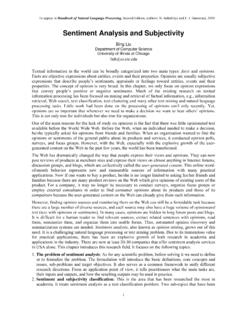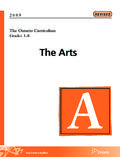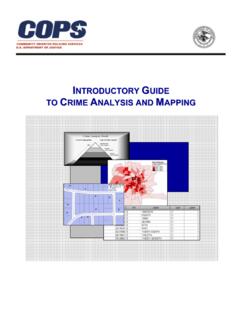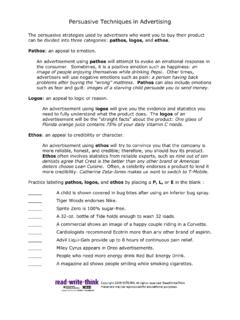Transcription of Data visualization - University of Illinois at Chicago
1 1 data visualization Zhao Kaidi School of Computing, National University of Singapore Matrix Number: HT00-6177E (Document Version ) Abstract data visualization is a quite new and promising field in computer science. It uses computer graphic effects to reveal the patterns, trends, relationships out of datasets. In this paper, we first get familiar with data visualization and its related concepts, then we will look through some general algorithms to do the data visualization . To get deeper about it, we will have some discussion about multidimensional data visualization . With the combination of some known methods, we present a new algorithm to do 4 dimensional data visualization .
2 We also present a program project plan about it (optional), and some issues and explanations around it. Introduction Human has a long history with basic data visualization , and data visualization is still a hot topic today. The history of visualization was shaped to some extent by available technology and by the pressing needs of the time, they include: primitive paintings on clays, maps on walls, photographs, table of numbers (with rows and columns concepts), these are all some kind of data visualization although we may not call them under this name at that time. visualization is the graphical presentation of information, with the goal of providing the viewer with a qualitative understanding of the information contents.
3 It is also the process of transforming objects, concepts, and numbers into a form that is visible to the human eyes. When we say information , we may refer to data , processes, relations, or concepts. Here, we restrict it to data . 2 data visualization is all about understanding ratios and relationships among numbers. Not about understanding individual numbers, but about understanding the patterns, trends, and relationships that exist in groups of numbers [4]. From the point of user understanding, it may involve detection, measurement, and comparison, and is enhanced via interactive techniques and providing the information from multiple views and with multiple techniques.
4 Why do we do data visualization ? To see and understand pictures is one of the natural instincts of human, and to understand numerical data is a years training skill from schools, and even so, a lot of people are still not good with numerical data [4]. From a well-drawn picture, one is much easier to find the trends and relations. Because visual presentation of information takes advantage of the vast, and often underutilized, capacity of the human eye to detect information from pictures and illustrations. data visualization shifts the load from numerical reasoning to visual reasoning. Getting information from pictures is far more time-saving than looking through text and numbers that s why many decision makers would rather have information presented to them in graphical form, as opposed to a written or textual form.
5 Another thing we should mention is that: data visualization is NOT scientific visualization . Scientific visualization uses animation, simulation, and sophisticated computer graphics to create visual models of structures and processed that cannot otherwise be seen, or seen in sufficient detail. While data visualization is a way that present and display information in a way that encourages appropriate interpretation , selection, and association. It utilizes human skills for pattern recognition and trend analysis, and exploits the ability of people to extract a great deal of information in a short period of time from visuals presented in a standardized format.
6 Background Before we focus on multi-dimensional data visualization , let s review some basic concept of data visualization and graphical technology. Talking about graphics, we should remind what is called graphical entities and attributes. When visualizing, generally we only have the following graphical entities and attributes to select from (although not limited to): 3 Entity: point, line(curve), polyline, glyph, surface, solid, image, text Attribute: color/intensity, location, style, size, relative position/motion What we call data , actually have some special characters, and often can be divided into following groups [6]. They include (but not limited to): Numeric, symbolic (or mix): 123, or @ Scalar, vector, or complex structure: Various units: meters, inch.
7 Discrete or continuous: 1, 2, 3, or p Spatial, quantity, category, temporal, relational, structural Accurate or approximate Dense or space Ordered or non-ordered Disjoint or overlapping Binary, enumerated, multilevel Independent or dependent Multidimensional, etc. We consider the data is properly visualized, if the visualization is [6]: Effective: viewers can interpret it easily. Accurate: sufficient for correct quantitative evaluation. Efficient: minimize data -ink ratio and chart-junk, show data , maximize data -ink ratio, brase non- data -ink, brase redundant data -ink Aesthetics: must not offend viewer's senses Adaptable: can adjust to serve multiple needs data visualization Techniques Bare the above in mind, we have some commonly used representation ways in data visualization , they include (but not limited to): Charts: bar or pie Graphs: good for structure, relationships Plots: 1- to n-dimensional Maps: one of most effective Images.
8 Use color/intensity instead of distance (surfaces) 4 3-D surfaces and solids Isosurfaces/slices We also have some common steps in data visualization [4], they include: data Changing Distribution Redefine Meaning Numerical Transformation Create Aggregate Meaning, etc. Clustering data Analysis Scaling, etc.
9 Graphical interpretation Adjust User interaction Touring Delete, Merge, Zoom, etc.
10 Numerical Transformation: visualization is a kind of transformation of numerical data . Numbers are abstract concepts, and to represent them as points and lines requires a transformation. Transformations include: 1) Changing the distribution: modify the distribution of numbers so that they are more suitable for analysis or visual presentation. Some frequently used ways include: Linear transformation Logarithmic transformation Normalizing transformation Arcsin transformation Square root transformation Inverse transformation 2) Redefining the Meaning: adjust numbers so that they are more meaningful, or more representative of the concept that the data analyst is interested in.













